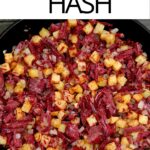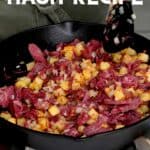This post may contain affiliate links. Please read our disclosure policy.
The perfect dish for when you don’t know what to make, this Irish-American corned beef hash recipe is packed with pantry staples and ready in just fifteen minutes.
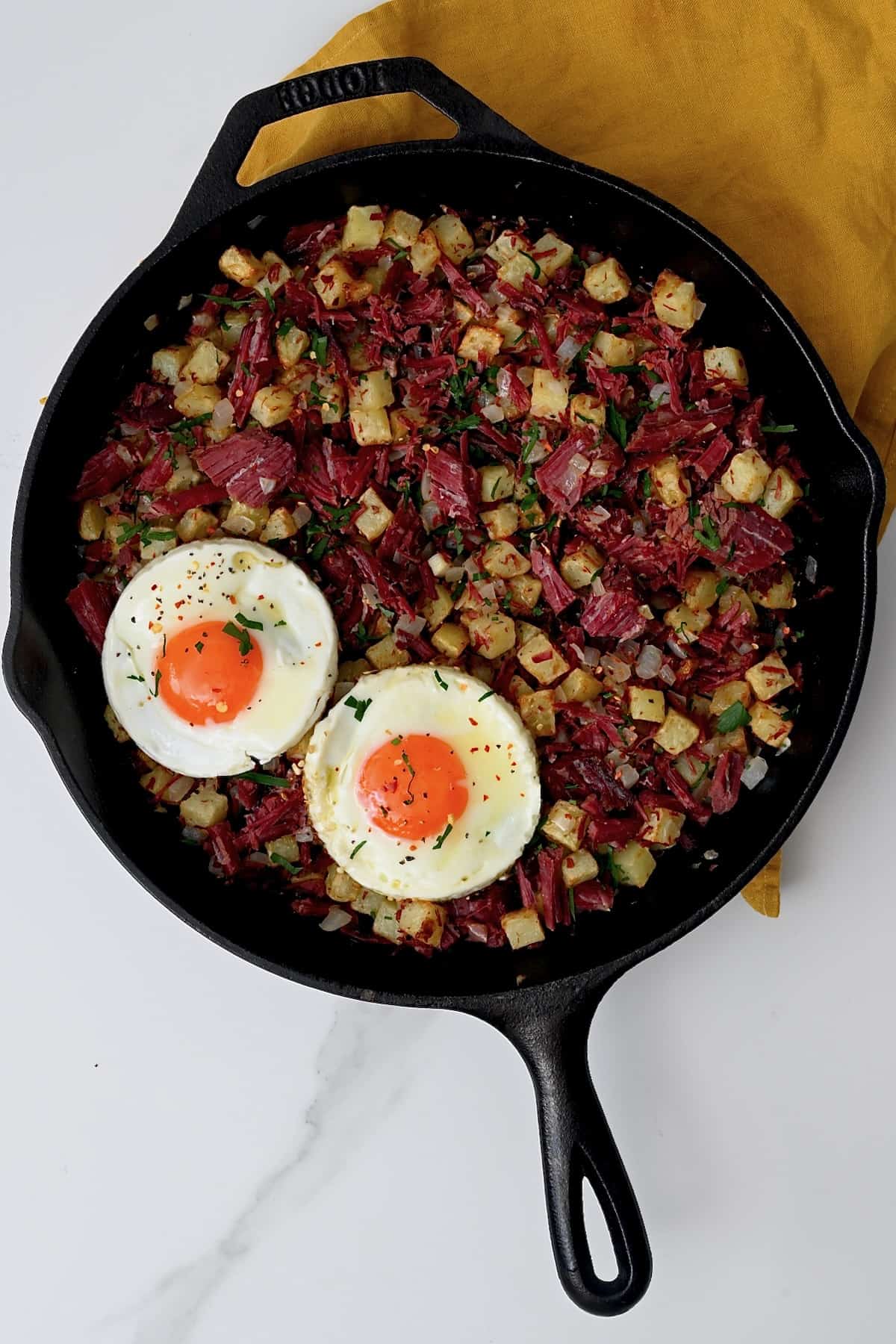
Want to save this recipe?
What is corned beef hash
Contrary to the popular myth, corned beef hash is not a traditional Irish dish. In fact, in Ireland, you’re more likely to find corned beef in a sandwich than anywhere else. You’ll find the best corned beef hash not on the streets of Dublin or a quaint corner of the western coast, but in the US. There the meal first became popular in 18th-century restaurants called hash houses.
Taking its name from the French hasher which means “to chop”, a hash refers to any dish made up of meat, potatoes, and onions that are chopped up and cooked together. You can easily serve it for any meal of the day. Plus, it gained popularity during the Second World War when it was tinned and sold across the world.
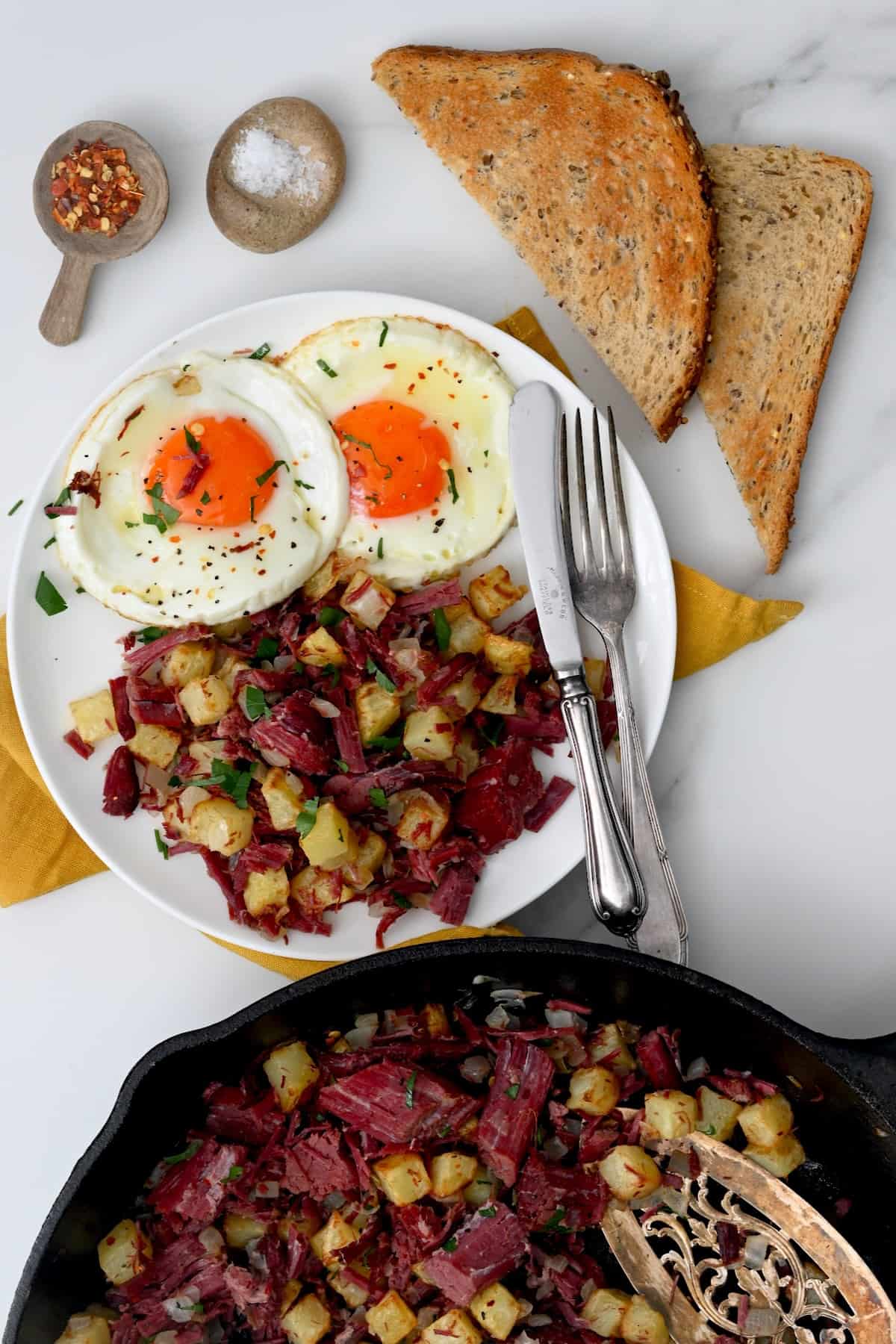
My homemade corned beef hash is more traditional to the American standard, but across the globe, many different variations exist. In Denmark, they make it with pickled beets, Worcestershire Sauce, and a fried egg; in Slovenia, they mix it with spaghetti sauce; and in South America, they serve it with bell peppers and plenty of garlic.
You can save this dish for St Patrick’s Day and serve it with boiled cabbage for an authentic Irish-American experience or cook this up on September 27 – officially “Corned Beef Hash Day”.
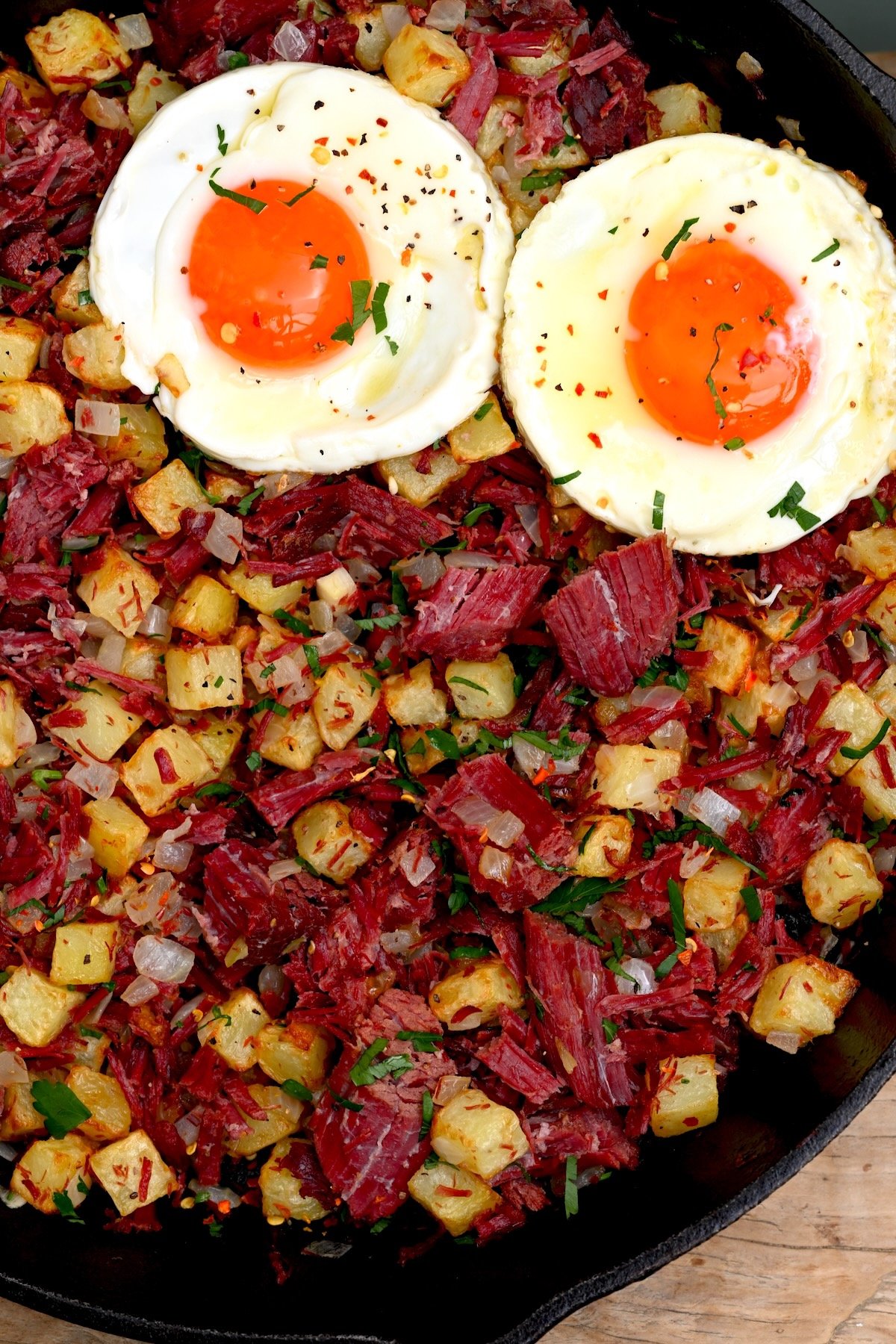
Corned beef hash ingredients
- Corned Beef: I like to use leftover corned beef that’s homemade corned beef or pre-prepared corned beef is best to use for a hash. If you’re buying from the grocery store, ask for thick slices at the deli counter. In a real pinch, you can also use canned corned beef – this is what people used traditionally.
- Potatoes: Corned beef hash is also a great way to use up any leftover potatoes – you can use any kind, so long as they still have some shape (so no mash!). If you’re making from scratch, I recommend using Russet potatoes for the best cooking results. Yukon Gold potatoes also work and will make a crunchy crust with a buttery interior.
- Onion: White or yellow work best for corn beef hash as they caramelize quicker when cooked.
- Eggs: If you’re serving as a side, feel free to leave the eggs out. Otherwise, best enjoy this recipe with poached eggs or fried eggs.
- Butter: Use unsalted butter to add flavor and richness to the beef. In a pinch, you can also use a neutral oil, but it will affect the taste.
- Parsley: Optional, to garnish. Most fresh green herbs will also work for this recipe. I also like to use green onions or chives if I don’t have parsley to hand.
- Seasonings: Black pepper, salt, chili flakes (optional). Corned beef is already well seasoned, so this simple mix is best for a hash.
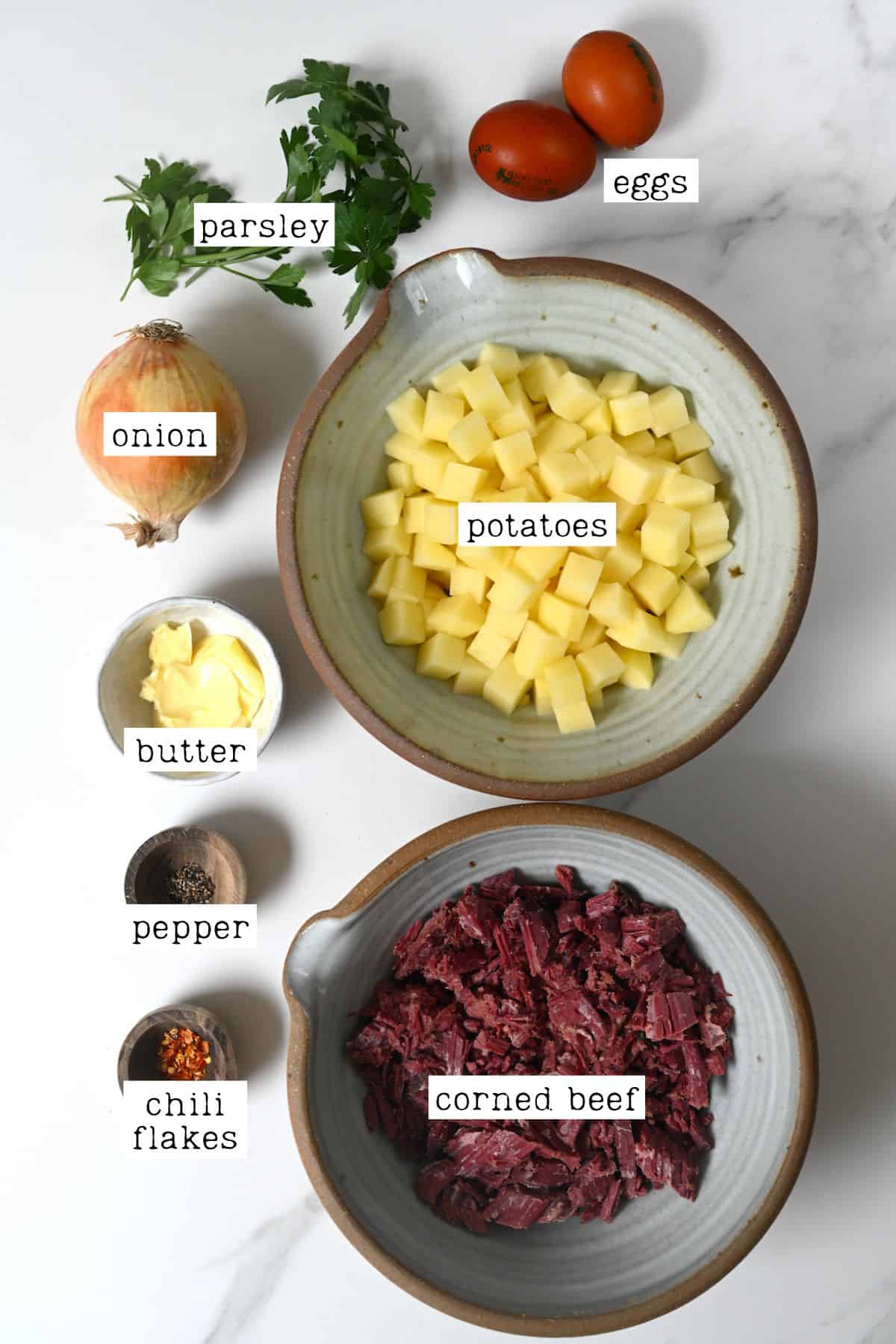
How to make corned beef hash
If you’re not working with leftover potatoes, start by peeling and finely chopping them up. I recommend cutting them into small ½ inch cubes so they mix easily with the pieces of corned beef. Then, cook them until soft. You can cook potatoes in an air fryer or make home fries using one of my three easy methods.
Then, peel and finely chop your onion.
In a cast iron skillet, melt the butter over medium-high heat. Once hot, add the onions and fry for 2-3 minutes until translucent. Add your corned beef and potatoes and stir occasionally. You may need to break up the corned beef into smaller pieces. Cook for several minutes until the beef is tender and the hash becomes completely warmed through.
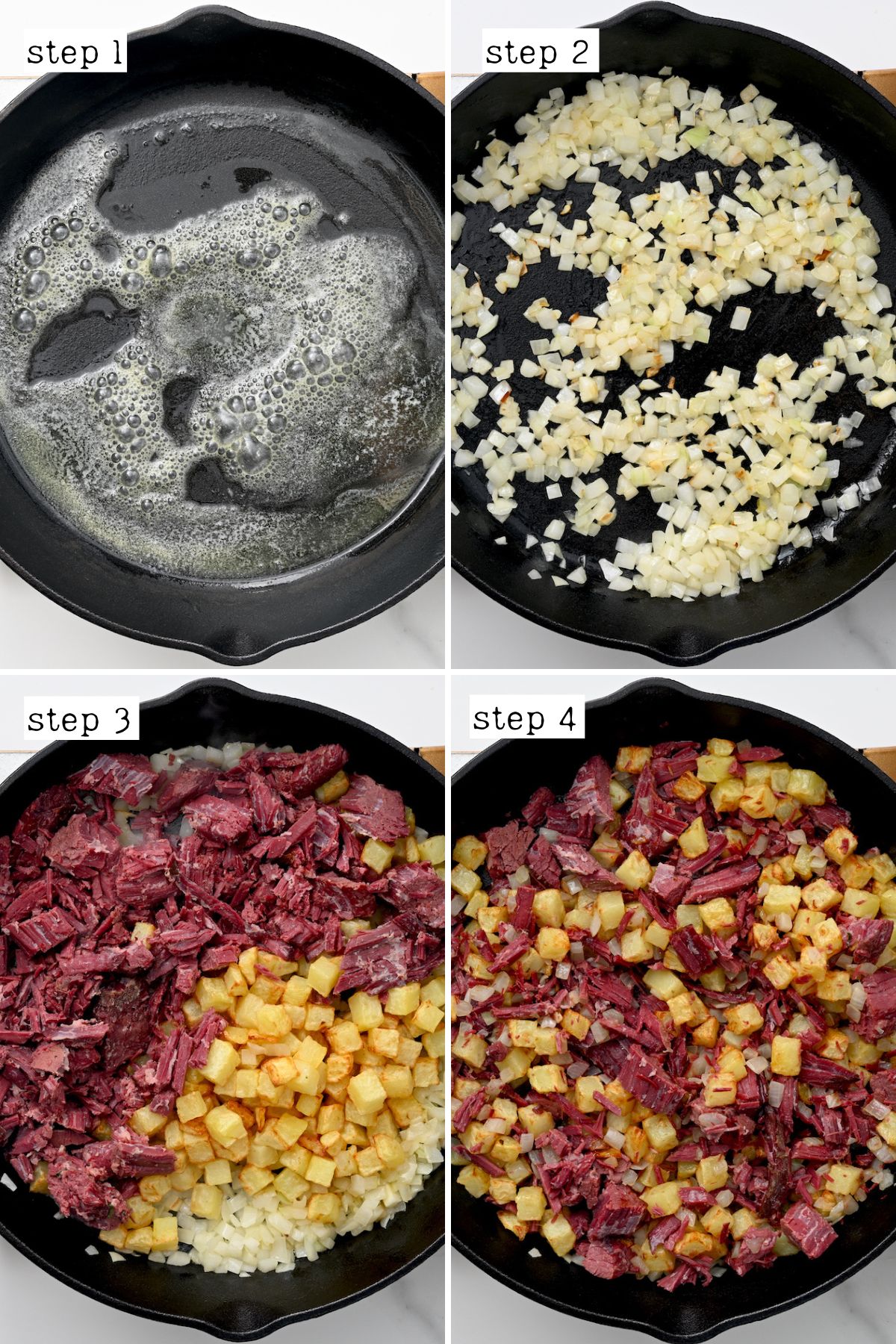
If you want more of a crust on your corned beef hash, keep the mixture cooking for a few more minutes, using a spatula to check underneath for browning. Then, flip when the crust is the right texture for your taste.
Transfer into a serving dish or bowl and sprinkle with the fresh herbs.
Cook the Eggs
While your corned beef hash is cooking, prepare your eggs (if using). You can poach or fry your eggs using your preferred method, either using a poaching pan, a pot of boiling water, or a frying pan. Alternatively, you can add your eggs directly to the hash – just create wells in the meat and potato mixture, crack your eggs inside, and reduce the heat to medium. Cover the pan with a lid and cook until the egg whites set.
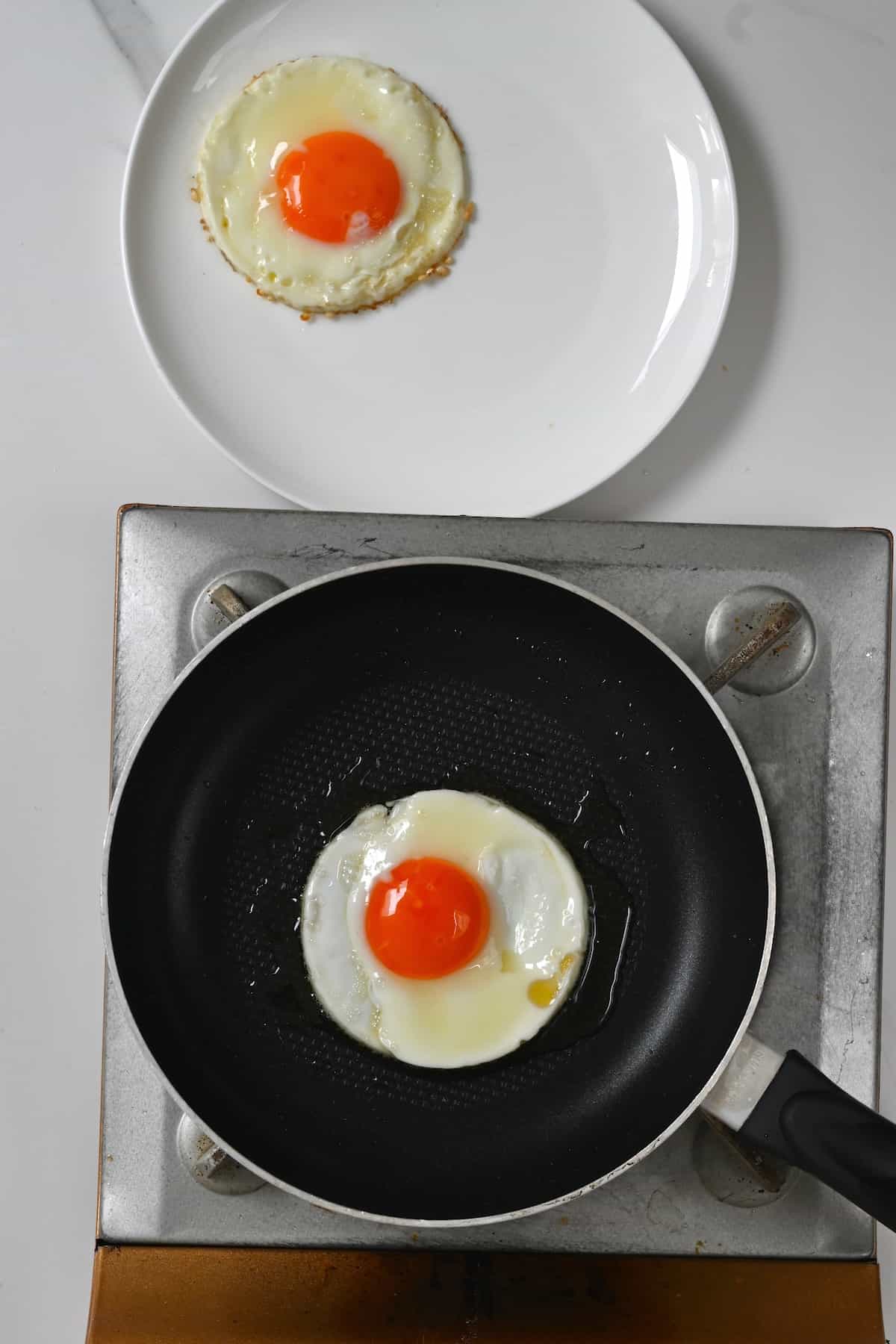
If you want to keep your corned beef hash fresh for a few days after cooking, store it in the cooking liquid to keep it moist. You can also add a small amount of broth or water to the pan while cooking – though I’ve found it difficult to keep the hash crispy when there’s water involved.
It’s best to enjoy this recipe the day you make it. Plus, it is a great way to use up leftovers.
What goes with corned beef hash
Traditionally corned beef hash tends to be served with boiled cabbage in the US, though there are plenty of other ways to enjoy it:
- If you’re serving it for breakfast, add it alongside fresh slices of toast or baked beans.
- Substitute for traditional ground meat and sprinkle into a tortilla alongside your favorite veggies for an Irish take on a breakfast burrito.
- Spoon it between an English muffin with some cheese for a high-protein breakfast sandwich.
- For some added nutrients, corned beef hash goes great with steamed vegetables. I always like pairing green veggies like sauteed spinach, kale salad, or sauteed green beans alongside it for dinner.
- Serve with sides like a green salad, homemade coleslaw, or a portion of your favorite rice – I like coconut rice or jasmine rice for an aromatic flavor – or double up with some extra roasted potatoes.
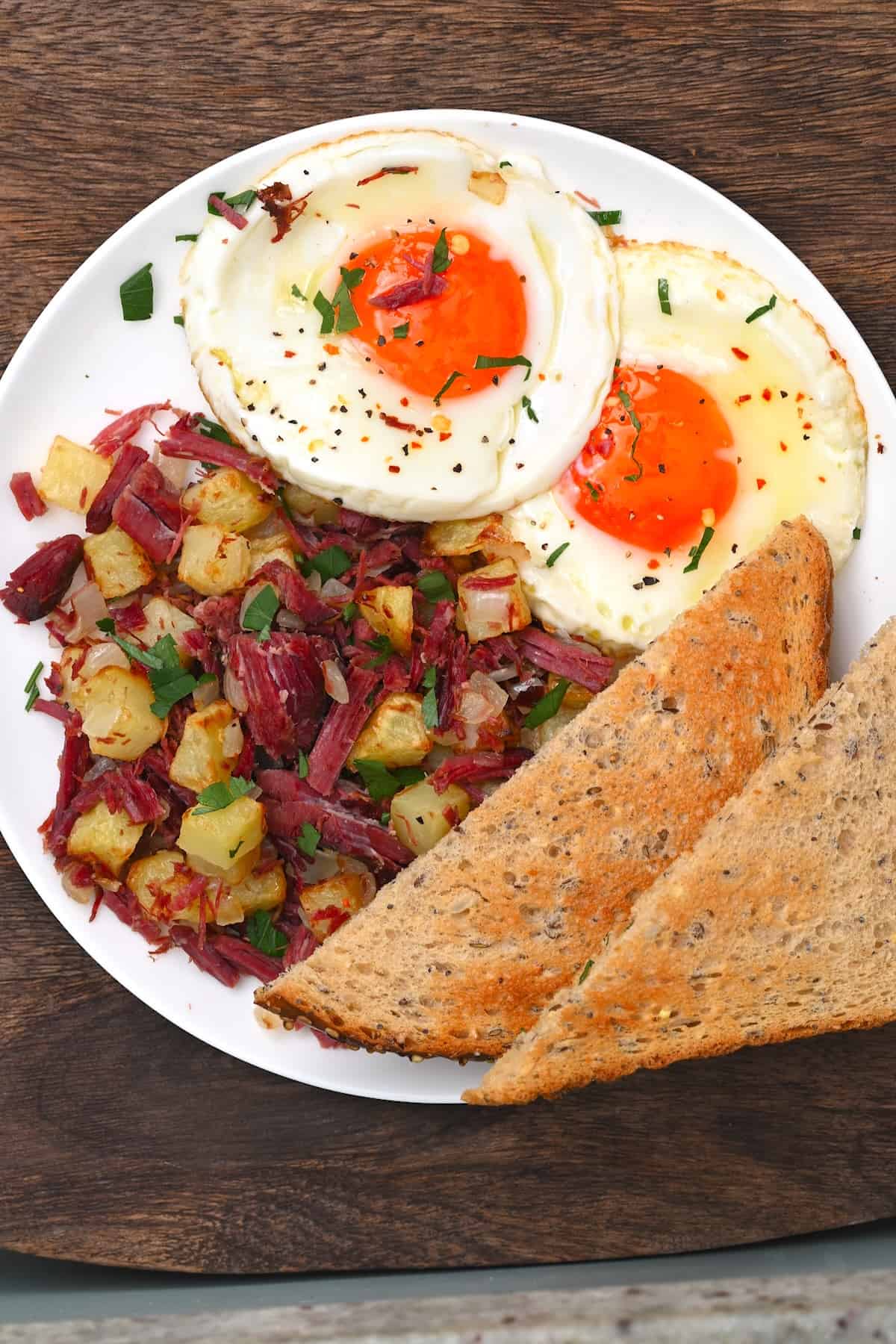
More beef recipes
- Instant Pot Corned Beef and Cabbage
- Slow Cooker Beef Stew
- Homemade Reuben Sandwich
- Perfect Slow Cooker Beef Brisket
If you try this corned beef hash recipe, let me know how it goes in the comments below. I’d appreciate a recipe card rating and would love to see your recipe recreations – tag me on Instagram @Alphafoodie!

Corned Beef Hash
Ingredients
- 1.23 lb potatoes cooked, 3 cups chopped
- 13.8 oz corned beef cooked, 3 cups chopped
- 7.2 oz onion 1 medium
- 1 oz butter 2 Tbsp; unsalted
- 0.14 oz parsley or green onions, chives
- 1/4 tsp black pepper to taste
- 2 eggs optional
- chili flakes to taste; optional
Instructions
How to Make Corned Beef Hash
- Peel and finely chop your potatoes if you're not using leftovers. Cut into 1/2-inch cubed pieces and cook to your preference – you can boil, fry or put them in the air fryer.
- In a cast iron skillet, melt the butter over a medium-high heat. Add your onions and cook for 2-3 minutes.
- Add the corned beef and potatoes and cook for a further 2-3 minutes until warmed through. Serve.
Corned Beef Hash with Eggs
- If you want to add eggs, you can poach or fry them as normal and serve them alongside. Alternatively, make two wells in the hash and crack an egg into each. Cover with a pan lid and allow to cook until they've turned white.
How to Serve Corned Beef Hash
- Corned beef hash is best enjoyed on the same day. Serve with toast and baked beans for an easy breakfast, pair with a green salad or sauteed green veggies, or substitute for ground meat in a breakfast burrito or sandwich.
Notes
- Greens: Leftover cooked cabbage, Brussels sprouts, broccoli, or kale work well, finely chopped.
- Carrots: If you have any leftover cooked carrots, they’ll taste wonderful and add extra nutrients. Parsnips work well, too.
- Beets: Chopped cooked beets add color and flavor.
- Peppers: Finely chopped and added with the onion. I.e., Red or green bell peppers.
- Worcestershire sauce: To add extra umami and flavor.
- Horseradish: A tiny amount (between a teaspoon and a tablespoon) will add depth and heat.
- Sweet potato: Replace or combine regular potato with sweet potato for a subtle sweetness to the dish.
- Garlic: Add to taste (a clove or two). Garlic powder works in a pinch.
- Smoked paprika: For a subtle smokiness, added to taste.
- Hot sauce or HP Sauce: To add when serving.
- Cheese: You can sprinkle some cheese (shredded or a crumbly cheese like feta) over the hash food just before serving.
- Baked beans: To add to or serve alongside the corned beef breakfast hash.
Nutrition
Nutrition information is automatically calculated, so should only be used as an approximation.


